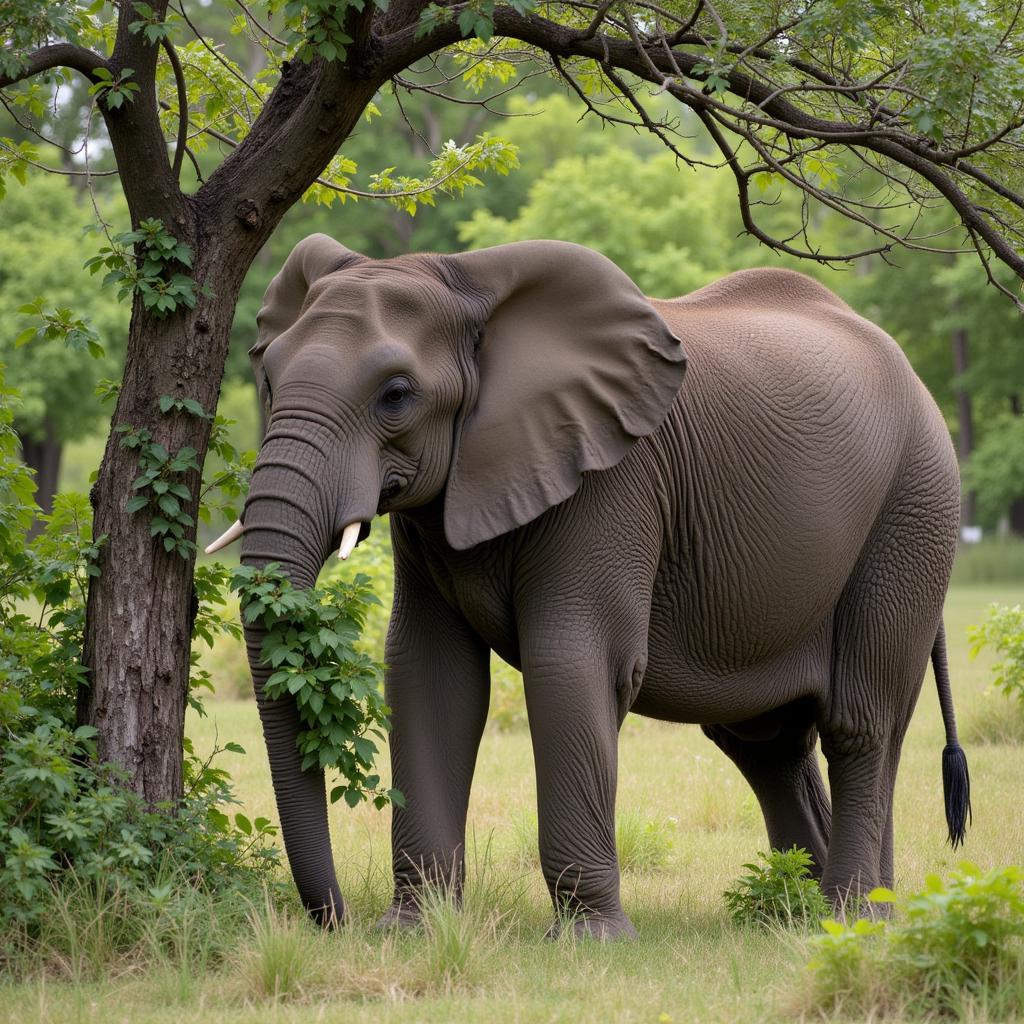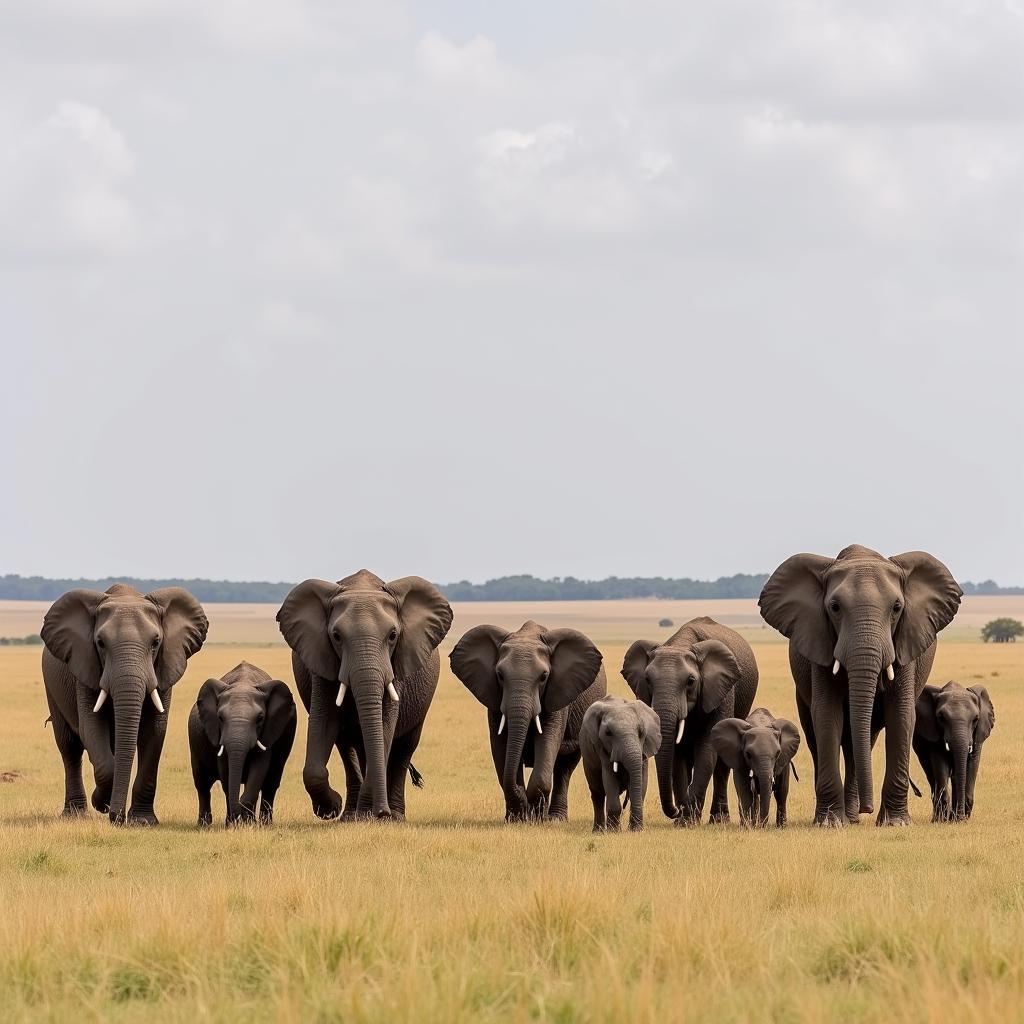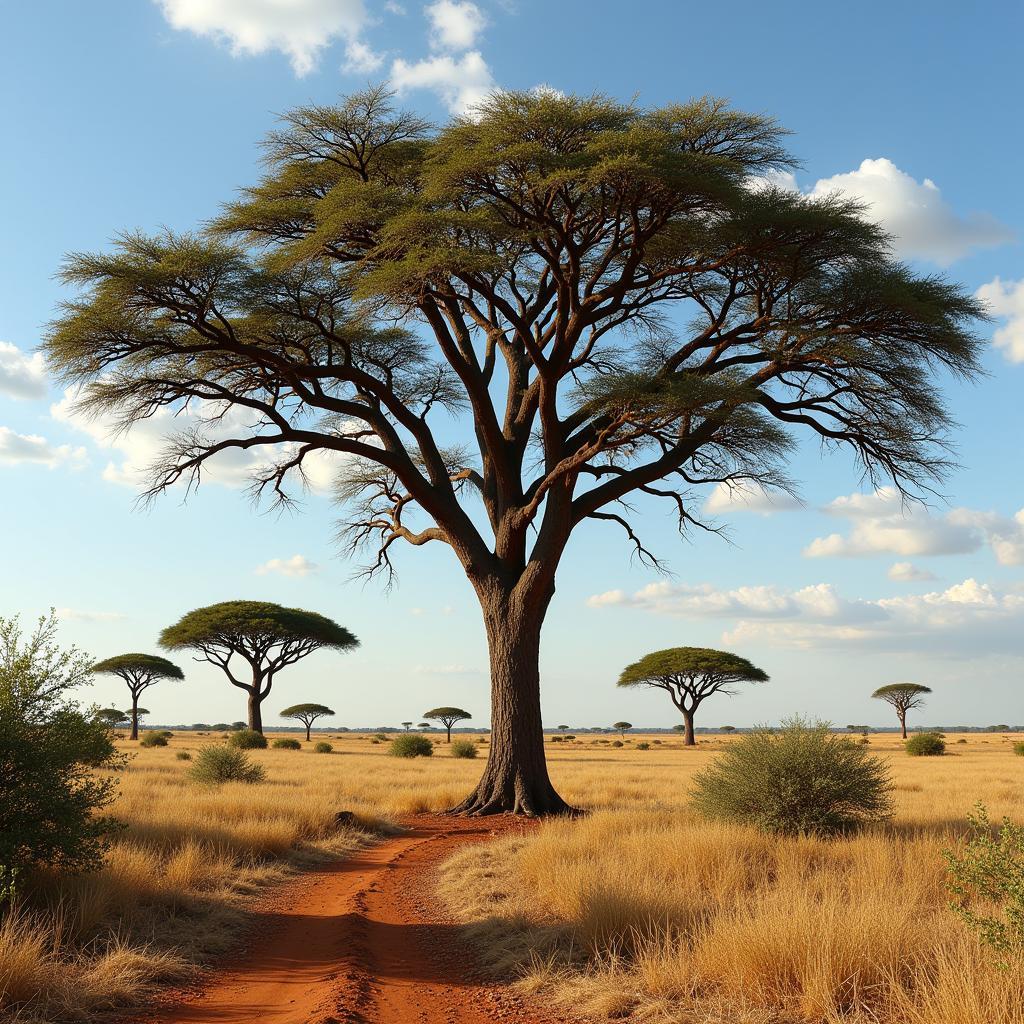African Bush Elephant: A Giant Among the Big 5 Animals
The African bush elephant, a majestic creature and one of the iconic Big 5 animals, roams the savannas and woodlands of Africa. These gentle giants play a vital role in their ecosystem and are a fascinating subject for wildlife enthusiasts around the world. This article explores the captivating world of the African bush elephant, delving into its characteristics, behavior, conservation status, and its place among the Big 5 animals.
Understanding the African Bush Elephant
The African bush elephant ( Loxodonta africana ) is the largest land mammal on Earth. They are distinguishable by their large ears, which are shaped like the African continent, and their long, curved tusks made of ivory. These tusks serve multiple purposes, from digging for water and minerals to defending against predators and competing for mates. Their enormous size, often exceeding 6 tons, is a testament to their evolutionary success. They can consume up to 300 kg of vegetation daily, playing a critical role in shaping their environment.  African Bush Elephant Feeding
African Bush Elephant Feeding
The Social Dynamics of African Bush Elephants
African bush elephants are highly social animals, living in complex matriarchal herds led by the oldest and most experienced female. These herds can range in size from a few individuals to several dozen, providing protection and support for the younger members. The strong bonds between family members are evident in their communication, which includes a range of vocalizations, from low rumbles to high-pitched trumpets. These sophisticated social structures contribute to their survival in the harsh African landscape. african bush elephant for kids
The African Bush Elephant and the Big 5
The term “Big 5” originally referred to the five most difficult animals to hunt on foot in Africa. These included the lion, leopard, rhinoceros, Cape buffalo, and, of course, the African bush elephant. While hunting practices have evolved, the Big 5 remain a symbol of African wildlife, attracting tourists and conservationists alike. african elephant big 5 animals The sheer size and power of the African bush elephant make it a truly awe-inspiring member of this prestigious group.
Why are African bush elephants considered Big 5 animals?
Their inclusion stems from the challenges and dangers associated with hunting them. Their size alone presents a formidable obstacle, but their intelligence and unpredictable behavior added to the difficulty. Imagine encountering an angry bull elephant in the dense bush – a truly terrifying prospect.
How can I see an African bush elephant in the wild?
Responsible tourism practices are crucial for observing these magnificent animals without disturbing their natural habitat. Visiting reputable national parks and reserves with experienced guides is the best way to experience the wonder of seeing African bush elephants in their natural environment.  African Bush Elephant Herd
African Bush Elephant Herd
Threats and Conservation Efforts
Sadly, the African bush elephant faces significant threats, primarily from poaching for its ivory tusks and habitat loss due to human encroachment. Conservation efforts are crucial to ensure the survival of this iconic species. These efforts include anti-poaching patrols, community engagement, and habitat protection. The continued existence of the African bush elephant depends on global cooperation and a commitment to preserving their natural environment.
Dr. Anthony Nyerere, a renowned wildlife conservationist, emphasizes the importance of these efforts: “Protecting the African bush elephant is not just about saving a species, it’s about safeguarding the entire ecosystem they inhabit. Their survival is inextricably linked to the health and balance of the African savanna.”
The Future of the African Bush Elephant
The future of the african bush elephant big 5 animals hinges on our collective action. By supporting conservation initiatives and promoting sustainable tourism, we can help ensure that future generations have the opportunity to witness the majesty of these gentle giants. Professor Sarah Abiola, an expert in African ecology, adds: “Education is key. We must raise awareness about the crucial role elephants play in their environment and the importance of protecting them from the threats they face.” african forest elephant vs african bush elephant
Conclusion
The African bush elephant, a keystone species of the African savanna, stands as a testament to the wonders of the natural world. Its inclusion in the Big 5 animals underscores its importance and the challenges it faces. By understanding its significance and supporting conservation efforts, we can help secure the future of this magnificent creature and preserve the rich biodiversity of Africa for generations to come.
FAQ
- What is the difference between an African bush elephant and an African forest elephant?
- How long do African bush elephants live?
- What do African bush elephants eat?
- How do African bush elephants communicate?
- Why are African bush elephants endangered?
- What are the main threats to African bush elephants?
- How can I help protect African bush elephants?
Are there any other questions on your mind about the intriguing world of the African Bush elephant and its status as one of the Big 5? Explore related articles on our site about the dangers posed by the african buffalo dangerous and learn more about instances of african elephant attack man.
For any assistance, contact us at Phone Number: +255768904061, Email: kaka.mag@gmail.com Or visit us at: Mbarali DC Mawindi, Kangaga, Tanzania. Our customer service team is available 24/7.



